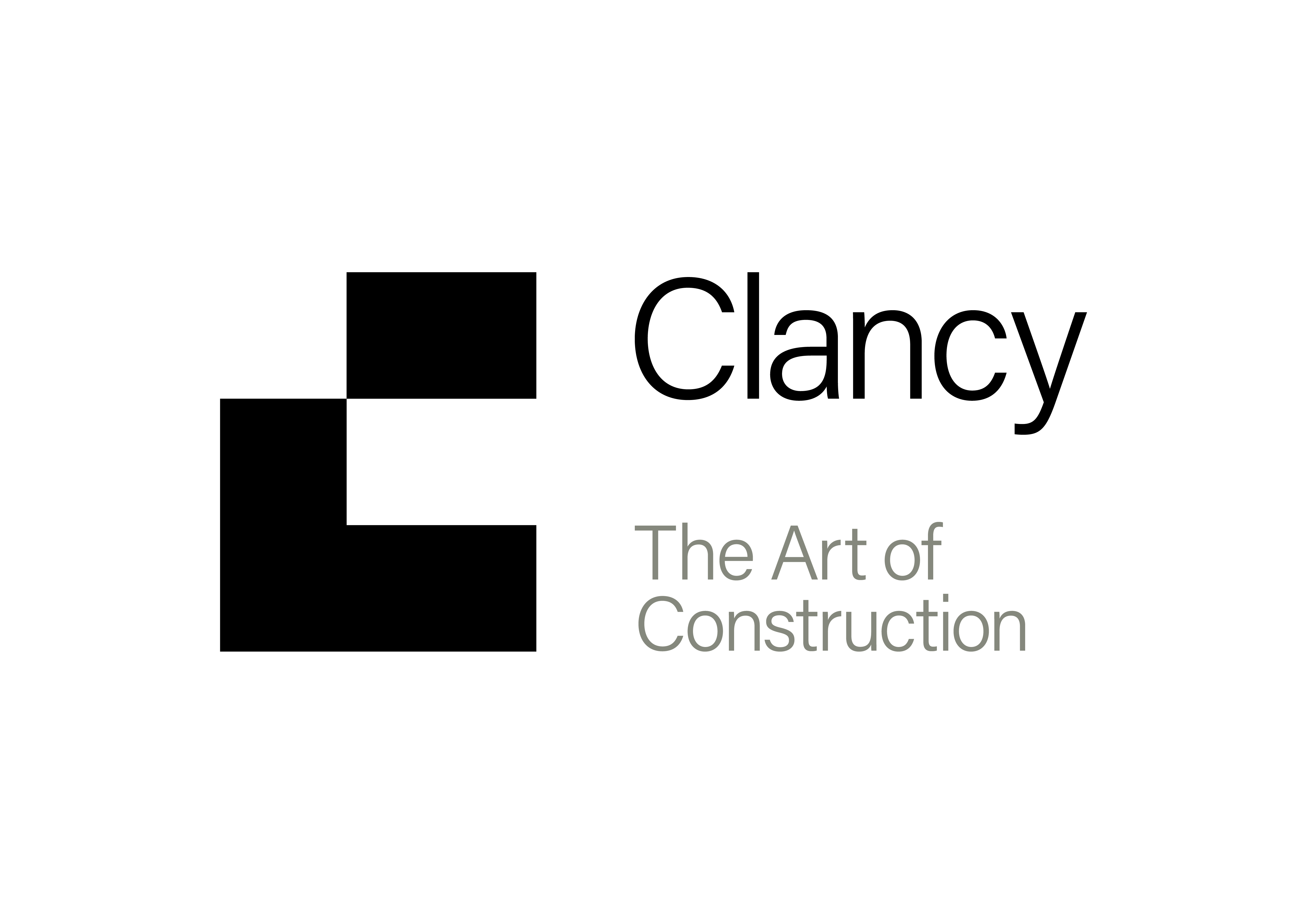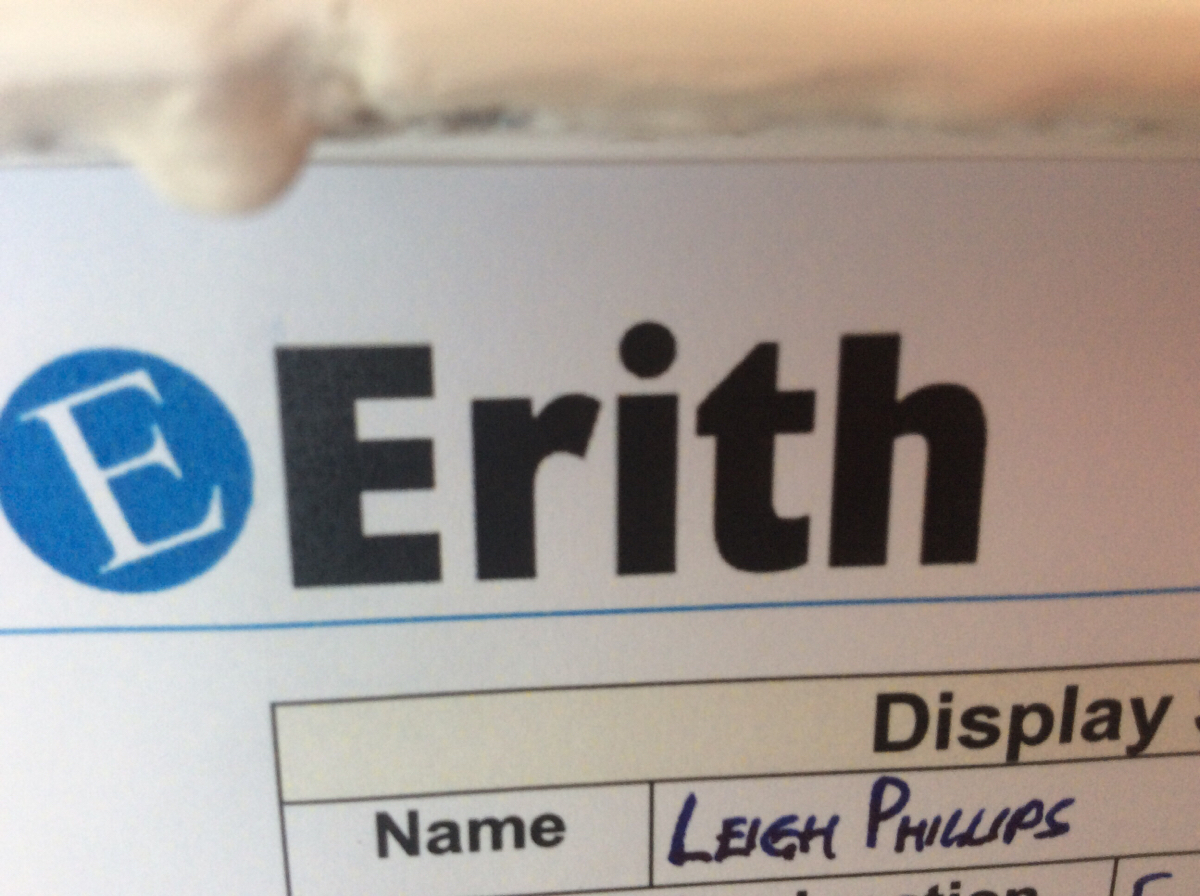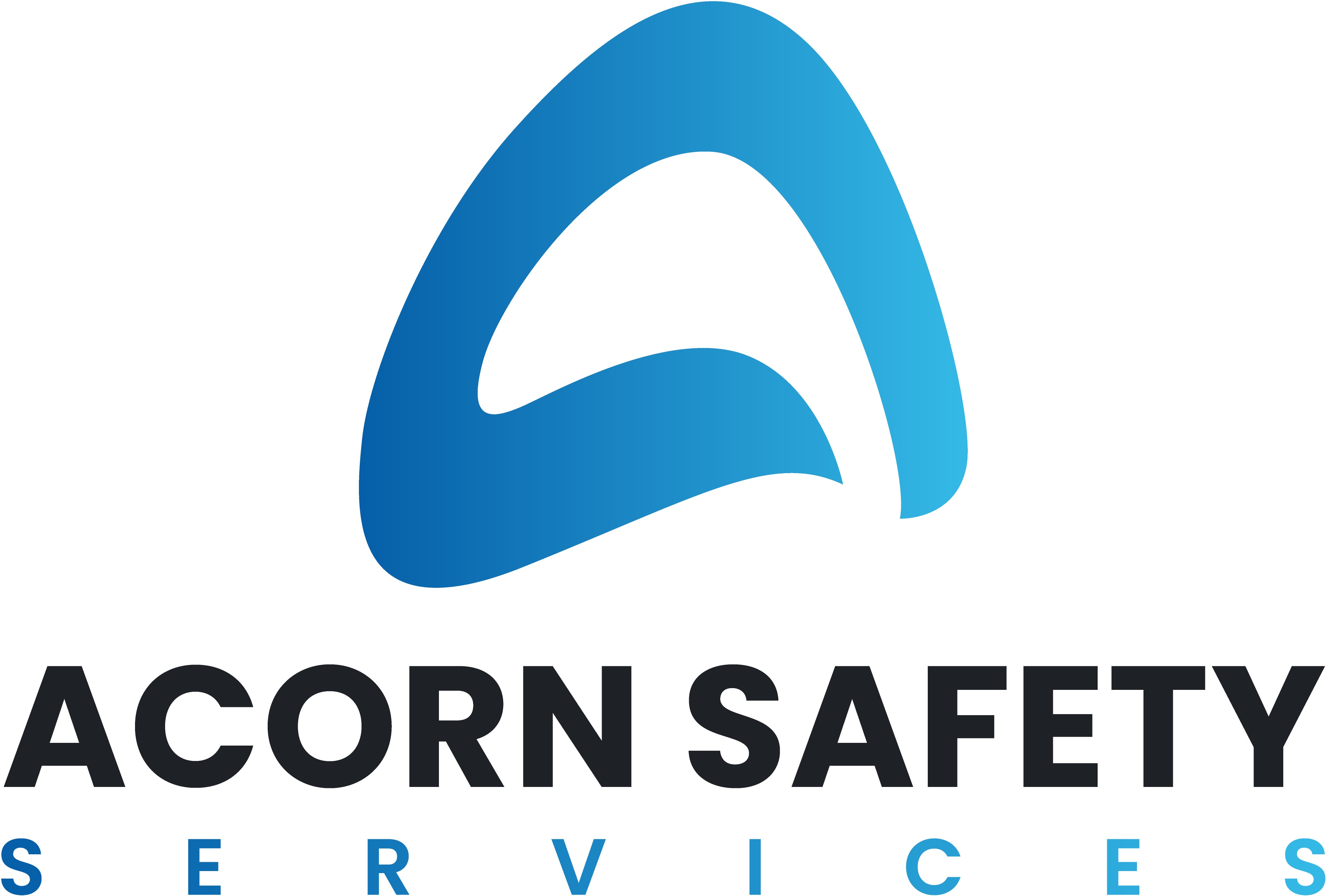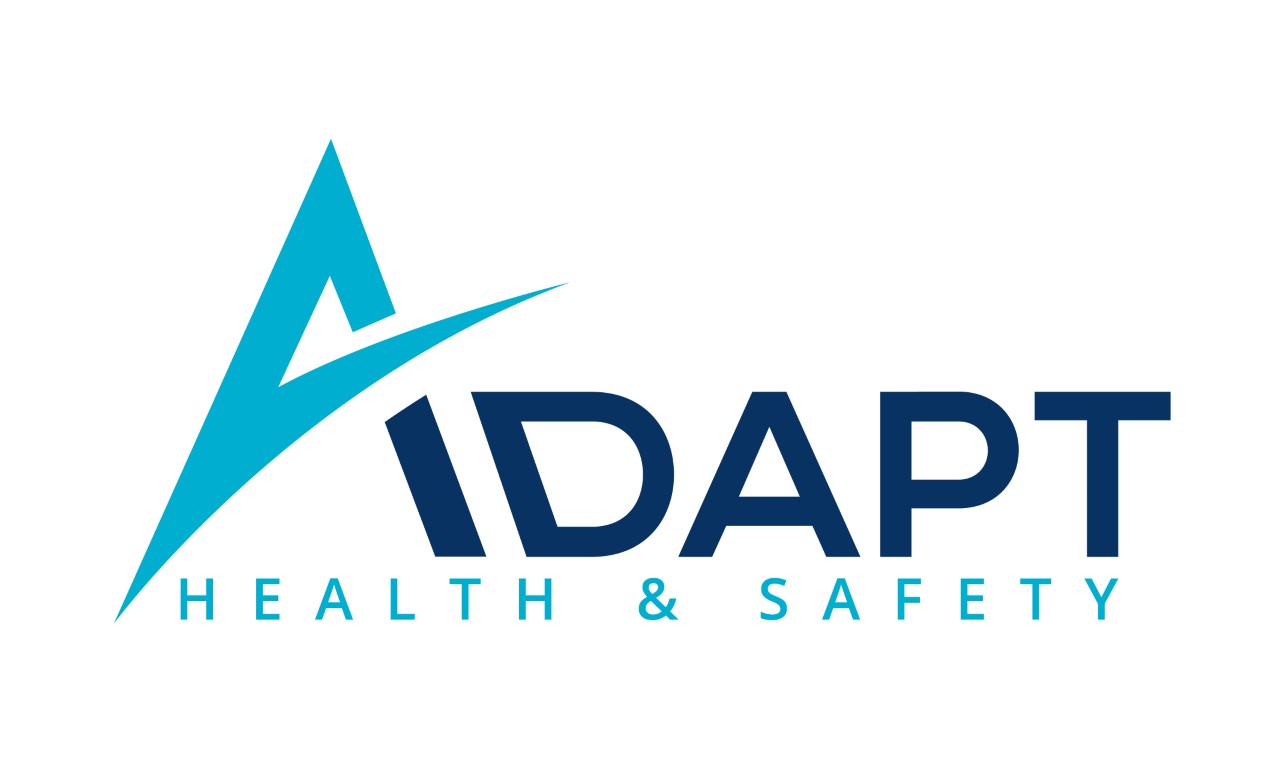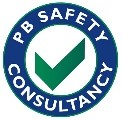Information
-
Document No.
-
Job reference
-
Principal Contractor
-
Contract Manager
-
Keyman / Site Supervisor
-
Conducted on
-
Conducted By
Scoring and Information
Scoring
-
0 - Major Breach
This is where the inspector is of the opinion that an activity carried on (or likely to be carried on) involves (or will involve) a risk of serious personal injury, or there was a failure to improve an activity previously scoring 1.
1 - Poor Compliance
This is where the inspector is of the opinion that a person is contravening one or more of the relevant provisions, or has contravened one or more of those provisions in circumstances that make it likely that the contravention will continue or be repeated.
2 - Adequate
This is where the inspector is of the opinion that a person is contravening one or more of the relevant provisions, or has contravened one or more of those provisions, but which during this audit satisfactory corrective actions were taken.
3 - Best Practice
This is where the inspector is of the opinion that a person is complying with one or more of the relevant provisions having applied the industry’s best practice.
Not Applicable:
This is either:
-Where the item is not applicable on this job or wasn't being carried out at the time of this inspection
Or
-Given time or other limitations, this item wasn't verified during this inspection.
Construction (Design and Management) Regulations 2015 - Regulation 15(1)
A contractor must not carry out construction work in relation to a project unless satisfied that the client is aware of the duties owed by the client under these Regulations.
This document can contribute to the company’s compliance to the above regulation if submitted to the client. -
This inspection was based on sampling and therefore contraventions may exist which have not been identified.
The same construction site may be audited more than once, the inspector at his/her discretion may focus on selected topics only and therefore a full audit may not be carried out. -
More information at:
http://www.hse.gov.uk/pubns/priced/l153.pdf
A-1.0-Management Control
-
Tick to hide
Management Controls
-
Construction (Design and Management) Regulations 2015 - Regulation 13, 15 and 24.
The Health and Safety Information for Employees (Amendment) Regulations 2009.
Employers’ Liability (Compulsory Insurance) Act 1969 and Regulations 1998 amended in 2002, 2004 and 2008.
Management of Health and Safety at Work Regulations 1999 as amended in 2003 and 2006.
http://www.hse.gov.uk/pubns/hsc13.pdf -
Employers’ Liability (Compulsory Insurance) Act 1969
http://www.legislation.gov.uk/ukpga/1974/37/section/2 -
A-1.01 Site sign in?
-
A-1.02-Contractors Liability Insurance details available on site?
-
A-1.03-Principal Contractors Liability Insurance available on site?
-
A-1.05-Are there qualified First Aiders and Fire wardens on site and have they been identified?
-
A-1.08-Is there a near miss and accident reporting system in use?
-
A-1.09-Site signage and information - H&S Law poster - Emergency Plan?
A-2.0-CDM 2015
-
Tick to hide
Construction Phase Plan (CPP)
-
Construction (Design and Management) Regulations 2015 - Regulation 4, 6, 12, 27, 31 and 32
The following topics should be considered within the CPP:
(a) a description of the project such as key dates and details of key members of the project team;
(b) the management of the work including:
(i) the health and safety aims for the project;
(ii) the site rules;
(iii) arrangements to ensure cooperation between project team members and coordination of their work, eg regular site meetings;
(iv) arrangements for involving workers;
(v) site induction;
(vi) welfare facilities; and
(vii) fire and emergency procedures;
(c) the control of any of the specific site risks listed in Schedule 3 where they are relevant to the work involved
The F10 must contain:
• The date of forwarding the notice.
• The address of the construction site or precise description of its location.
• The name of the local authority where the construction site is located.
• A brief description of the project and the construction work that it entails.
• The following contact details of the client: name, address, telephone number and (if available) an email address.
• The following contact details of the principal designer: name, address, telephone number and (if available) an email address.
• The following contact details of the principal contractor: name, address, telephone number and (if available) an email address.
• The date planned for the start of the construction phase.
• The time allocated by the client under regulation 4(1) for the construction work.
• The planned duration of the construction phase.
• The estimated maximum number of people at work on the construction site.
• The planned number of contractors on the construction site.
• The name and address of any contractor already appointed.
• The name and address of any designer already appointed.
• A declaration signed by or on behalf of the client that the client is aware of the client duties under these Regulations.
http://www.hse.gov.uk/pubns/hsc13.pdf -
A-2.01-PC appointed, CPP available to crew. F10 displayed - Site manager appointed?
-
A-2.04-Have the Principal Designer, Temporary Works Coordinator and TW. supervisor appointed and are details of the Duty Holders available?
-
A-2.08- Is information of Site Rules, Fire Plan and Risk Assessment, First Aid and Emergency arrangements available to those on site?
-
A-2.10-Traffic Plan, Environmental Plan?
-
A-2.14-Control of specific site risks listed in Schedule 3 of the CDM 2015
A-3.0-Induction, Training and Consultation
-
Tick to hide
Induction and Training
-
Construction (Design and Management) Regulations 2015 - Regulation 13(4)a
The Principal Contractor must ensure that a suitable site induction is provided.
Construction (Design and Management) Regulations 2015 - Regulation 15(7)
A contractor must not employ or appoint a person to work on a construction site unless that person has, or is in the process of obtaining, the necessary skills, knowledge, training and experience to carry out the tasks allocated to that person in a manner that secures the health and safety of any person working on the construction site.
Construction (Design and Management) Regulations 2015 - Regulation 15(8) and 15(9)a:
A contractor must provide each worker under their control with appropriate supervision, instructions and information so that construction work can be carried out, so far as is reasonably practicable, without risks to health and safety.
The information provided must include a suitable site induction, where not already provided by the principal contractor.
http://www.hse.gov.uk/pubns/priced/l153.pdf -
A-3.2-Site specific safety induction?
-
A-3.3-Training Log for bona fide subcontractor? (SRS 01)
-
A-3.4-CSCS/CPCS card or equivalent?
-
A-3.6-Site supervisors SMSTS, SSSTS or similar?
-
A-3.7-Operative's competency (training, skills, experience and knowledge) for tasks being carried out?
-
A-3.8-Toolbox Talks?
A-4.0-RAMS
-
Tick to hide
RAMS
-
Construction (Design and Management) Regulations 2015 - Regulation 15;
Management of Health and Safety at Work Regulations 1999 as amended in 2003 and 2006.
http://www.hse.gov.uk/pubns/indg163.pdf -
A-4.1-Are RAMS documents available and signed?
-
A-4.2-Task risk assessments?
-
A-4.4-COSHH Assessments?
-
A-4.5-PUWER Assessments?
-
A-4.6-Lifting Plan?
A-5.0-Permits to Work (PTW)
-
Tick to hide
Permits to Work
-
A-5.1-PTW01 - Permit to Dig?
-
A-5.2-PTW02 - Hot Work Permit?
-
A-5.3-PTW03 - Permit to Operate Piling Rig Wihtout Guards?
-
A-5.5-PTW05 - Permit to operate Plant without Roll Over Protection System
A-6.0-Site Surveys
-
Tick to hide
Site Surveys
-
Construction (Design and Management) Regulations 2015 - Regulations 4; 5; 9 and 11
The following site surveys must be carried out as required including:
• Structural surveys (including retained structures, underground structures and obstructions).
• Unexploded bomb survey.
• Railway and tunnel search.
• Asbestos and other hazardous materials surveys and registers.
• Fire hydrants.
• Telecommunications.
• Wireless networks and satellite reception.
• Electrical infrastructure and capacity.
• Gas network infrastructure and capacity.
• Foul sewers and drains infrastructure and capacity.
• Existing water supply infrastructure and capacity.
http://www.hse.gov.uk/pubns/priced/l153.pdf -
A-6.1-Asbestos survey (HSG264)?
-
A-6.3-Utilities Search Survey & UXO?
-
A-6.6-Have all applicable hazards communicated to crews?
A-7.0-Site Records
-
Tick to hide
Site Records
-
Management of Health and Safety at Work Regulations 1999 as amended in 2003 and 2006
Work at Height Regulations 2005
Lifting Operations and Lifting Equipment Regulations 1998 (LOLER)
Confined Spaces Regulations 1997
The Control of Vibration at Work Regulations 2005
Control of Asbestos Regulations 2012
The Noise at Work Regulations in 1989 and the revised Control of Noise at Work Regulations in 2005
Provision and Use of Work Equipment Regulations 1998 (PUWER)
http://www.hse.gov.uk/pubns/priced/hsg65.pdf -
A-7.01-Are Daily Site Inspections being completed and documented?
-
A-7.07-Site Electrical Installation certificate and PAT testing?
-
A-7.08-Are HAVS exposure limits available to the crew and is the work being planned to reduce exposure?
-
A-7.11-Plant maintenance records?
-
Environmental Protection Act 1990
The Waste (England and Wales) Regulations 2011
The Hazardous Waste Regulations 2005
The WTN for non-hazardous waste must contain:
• Description
• European Waste Catalogue Code
• How the waste is contained
• The quantity of waste
• The name and contact details of the waste ‘transferor’
• A declaration that you have applied the waste management hierarchy to the waste you produce
• (SIC Code for your business: 41100 for AP
• The name and contact details of the person collecting the waste, the ‘transferee’
• Details of the ‘transferee’s’ Waste Carriers Licence
• Address of point of collection
• Signatures from both parties, along with the date
A Consignment Note must be used for Hazardous Waste.
http://www.hse.gov.uk/pubns/priced/hsg65.pdf -
A-7.12-Are Waste transfer and consignment notes being completed and records retained?
undefined
A-8.0-Temporary Works
-
Tick to hide
Temporary works
-
Temporary workf forum - Underpinning Good practice guidance https://www.twforum.org.uk/HigherLogic/System/DownloadDocumentFile.ashx?DocumentFileKey=ee3ff92d-fdc7-1150-e84b-e2755c4c6382&forceDialog=0
-
A-8.1-Are Temporary works designs for the ongoing work available to the site crew?
-
A-8.2-Are ALL Temporary works recorded on a register?
-
A-8.3- Are ALL temporary works being regularly inspected and those inspections documented?
B-2.0-First Aid
-
Tick to hide
First Aid
-
The Health and Safety (First-Aid) Regulations 1981
http://www.hse.gov.uk/pubns/priced/l74.pdf -
B-2.1-First aid kits available and identified? (Checked contents list and stocked)
-
B-2.2-Are Eye wash stations available close to the work site and identified?
-
B-2.03- Is there a suitably qualified First Aider on the crew?
B-3.0-Fire Risks and Management
-
Tick to hide
Fire risks and Management
-
Construction (Design and Management) Regulations 2015 - Regulation 29, 30, 31 and 32;
The Regulatory Reform (Fire Safety) Order 2005
Health and Safety (Safety Signs and Signals) Regulations 1996.
http://www.hse.gov.uk/pubns/priced/hsg168.pdf -
B-3.2-Fire action notices, Alarm, Emergency Assembly Point?
-
B-3.4a-Escape routes Identified, clear of all obsticles and suitably Lit?
-
B-3.4b - Is emergency lighting installed where required?
-
B-3.6-Fire extinguishers identified, inspected and secured?
B-4.0-Electricity
-
Tick to hide
Electricity
-
Construction (Design and Management) Regulations 2015 - Regulation 25
The Electricity at Work Regulations 1989
http://www.hse.gov.uk/pUbns/priced/hsr25.pdf -
B-4.1-Use of 110V whenever possible protected by RCD?
-
B-4.3-Leads safely routed and not causing trip hazards?
-
B-4.4-Precautions from overhead power cables?
B-5.0-Environmental Considerations
-
Tick to hide
Environmental Control
-
Construction (Design and Management) Regulations 2015 - Regulation 9 and 10
The Environmental Protection Act (EPA) 1990
http://www.construct.org.uk/media/How_to_Waste_Transfer_Notes_and_Consignment_Notes_(2).pdf -
B-5.1-Are Spill kits / drip trays available?
-
B-5.2-Are Concrete washout facilities siutable?
-
B-5.3-Housekeeping?
-
B-5.4-Are Roads kept clean from site waste and debris?
-
B-5.5-Is dust control adaquate within and beyond the site boundary?
-
B-5.6-Are noise emissions kept to a minimum and stricktly within permitted hours?
B-6.0-Compressors
-
Tick to hide
Compressors
-
Construction (Design and Management) Regulations 2015 - Regulation 13
http://www.hse.gov.uk/pubns/priced/hsg39.pdf -
Pressure Systems Safety Regulations 2000
http://www.hse.gov.uk/pubns/priced/l122.pdf -
Provision and Use of Work Equipment Regulations 1998 (PUWER)
http://www.hse.gov.uk/pubns/priced/l22.pdf -
B-6.1-Whip checks?
-
B-6.2-Compressor suitably sited and secured when not in use?
B-7.0-COSHH
-
Tick to hide
COSHH
-
Construction (Design and Management) Regulations 2015 - Regulation 13;
Control of Substances Hazardous to Health Regulations (COSHH) 2002 and 2004 Amendment.
http://www.hse.gov.uk/pubns/priced/l5.pdf -
Controlling hazardous substances
http://www.hse.gov.uk/construction/healthrisks/hazardous-substances/index.htm -
B-7.1-Hazardous substances clearly identified and suitably stored?
-
Suitable dust suppression includes water dampening, on-tool extraction, mechanical ventilation, etc.
-
B-7.4-Dust suppression on Tools?
-
B-7.4a- Are FFP3 Masks available?
-
B-7.4b- Have all operatives been Face Fit Tested for the masks they are using?
-
B-7.5- Plant exhaust fumes? (ventilation and suitable filters)
-
B-7.6 - Is there a gas monitor in use where required?
-
B-7.7- Controls for working near live sewage?
B-8.0-Excavations
-
Tick to hide
Excavations
-
Construction (Design and Management) Regulations 2015 - Regulation 13;
Work at Height Regulations 2005;
Confined Spaces Regulations 1997;
Provision and Use of Work Equipment Regulations 1998 (PUWER);
Management of Health and Safety at Work Regulations 1999 as amended. -
Domestic basement construction projects
http://www.hse.gov.uk/pubns/cis66.pdf -
Excavation
http://www.hse.gov.uk/pubns/cis64.pdf -
Avoiding danger from underground services
http://www.hse.gov.uk/pubns/priced/hsg47.pdf -
Health and safety in construction
http://www.hse.gov.uk/pubns/priced/hsg150.pdf -
B-8.01-Services checked and marked on a drawing?
-
B-8.02-Work in accordance with Permit To Dig?
-
B-8.03-Adequate shoring or battering?
-
B-8.04-Safe access and egress to the excavation?
-
B-8.05-Edge protection (people and vehicles)?
-
B-8.06-Spoil and plant stored away from excavation?
-
B-8.07-Control of water ingress?
-
Confined Space (Underpinning Bases > 2m) ?
Confined Space (Underpinning Bases > 1.2m)
-
B-8.08-Ladders suitable and secured?
-
B-8.09-Gas monitor tested and in use while operatives work inside the confined space?
-
B-10 - Are all operatives working in deep underpins wearing harnesses?
-
B-8.11-Emergency procedures rehearsed?
-
B-8.12-Emergency equipment accessible?
B-9.0-Piling Operations
-
Tick to hide
Piling Operations
-
Health and Safety at Work Act 1974
Management of Health and Safety Regulations 1999
Provision and use of Work Equipment Regulations 1998
Construction (Design and Management) Regulations 2015
http://www.fps.org.uk/fps/guidance/plant/FPS%20-%20Guidance%20on%20PUWER%20Edition%202b%20(Dec13).pdf -
B-9.1-Services checked and marked on the drawing?
-
B-9.2-Work in accordance with Permit To Dig ?
-
B-9.3-Work area controlled?
-
Unguarded operation of the piling rig?
Unguarded operation of the piling rig
-
B-9.4-Danger zone secured?
-
B-9.5-Can safe mode be operated?
-
B-9.6-Permit in place and work carried out accordingly?
-
B-9.7-Are piles which require unguarded operation identified on a drawing?
B-10.0-Lifting Operations
-
Tick to hide
LOLER
-
Construction (Design and Management) Regulations 2015 - Regulation 13;
Provision and Use of Work Equipment Regulations 1998 (PUWER);
Lifting Operations and Lifting Equipment Regulations 1998 (LOLER); -
Lifting equipment at work
http://www.hse.gov.uk/pubns/indg290.pdf -
Safe use of lifting equipment
http://www.hse.gov.uk/pubns/priced/l113.pdf -
B-10.1-Lifting operations detailed in lift plan/Risk Assessment?
-
B-10.2-Equipment certified by thorough examination and SWL indicated?
-
B-10.3-Work area segregated and controlled?
-
B-10.4-Suitable lifting equipment and accessories in use?
B-11.0-Manual Handling
-
Tick to hide
Manual handling
-
Construction (Design and Management) Regulations 2015 - Regulation 13;
Manual Handling Operations Regulations (MHO) 1992 as amended in 2002. -
Manual handling at work - A brief guide
http://www.hse.gov.uk/pubns/indg143.pdf -
Manual Handling Operations Regulations 1992 (as amended) - Guidance on Regulations
http://www.hse.gov.uk/pubns/priced/l23.pdf -
B-11.1-Manual Handling aids used correctly and in good order?
-
B-11.2-Features of the environment suitable for Manual Handling operations (clear routes etc)?
-
B-11.3-Have Operatives been trained to carry out Manual Handling operations?
B-12.0-Personal Protective Equipment (PPE)
-
Tick to hide
PPE
-
Construction (Design and Management) Regulations 2015 - Regulation 13;
Personal Protective Equipment Regulations 2002 -
Personal Protective Equipment at Work Regulations 1992 - Guidance on Regulations
http://www.hse.gov.uk/pubns/priced/l25.pdf -
B-12.1-PPE worn where required?
-
B-12.2-PPE in serviceable condition?
B-13.0-Plant, Tools and Equipment
-
Tick to hide?
Plant, Tools And Equipment
-
Construction (Design and Management) Regulations 2015 - Regulation 13;
Provision and Use of Work Equipment Regulations 1998 (PUWER)
Management of Health and Safety at Work Regulations 1999 as amended -
Providing and using work equipment safely - A brief guide
http://www.hse.gov.uk/pubns/indg291.pdf -
Safe use of work equipment
http://www.hse.gov.uk/pubns/priced/l22.pdf -
B-13.1-Tools properly stored when not in use?
-
B-13.2-Plant and machinery with appropriate guards?
-
B-13.3-Safety interlock systems?
-
B-13.4-Emergency stops?
-
B-13.5-Alarms and beacons?
-
B-13.6-Hazards identified and controls put in place?
-
B-13.7-Equipment in servicable condition and appropriate for the task?
B-14.0-Site Safety and Security
-
Tick to hide
Site Safety And Security
-
Under the Health and Safety at Work etc. Act 1974 - Section 3;
It shall be the duty of every employer to conduct his undertaking in such a way as to ensure, so far as is reasonably practicable, that persons not in his employment who may be affected thereby are not thereby exposed to risks to their health or safety.
Under the Construction (Design and Management) Regulations 2015 - Regulation 18;
(1) Each part of a construction site must, so far as is reasonably practicable, be kept in good order and those parts in which construction work is being carried out must be kept in a reasonable state of cleanliness.
(2) Where necessary in the interests of health and safety, a construction site must, so far as is reasonably practicable, and in accordance with the level of risk posed, comply with either or both of the following:
(a) have its perimeter identified by suitable signs and be arranged so that its extent is readily identifiable; or
(b) be fenced off
(3) No timber or other material with projecting nails (or similar sharp object) must:
(a) be used in any construction work; or
(b) be allowed to remain in any place.
Health and Safety (Safety Signs and Signals) Regulations 1996.
http://www.hse.gov.uk/pUbns/priced/l64.pdf -
There is also a need to ensure that the site itself is safe should children manage to trespass onto the site
-
B-14.01-Site access controlled?
-
B-14.02-Signs to warn members of the public?
-
A suitable fence or hoarding around the site should be maintained in good condition. In populated areas this should be 2 metres high and may require a design.
-
B-14.03-Site fence / hoarding?
-
B-14.04-Suitable access around the site and to the work area?
-
B-14.05-Noise protection zones identified?
-
B-14.06-Materials safely stacked and stored within the site perimeter?
-
B-14.07-Mushroom caps on rebar?
-
B-14.08-Edge protection in place?
-
B-14.09-Ladders securely stored when not in use?
-
B-14.10-Plant immobilised when not in use?
-
B-14.11- Is there sufficient Lighting?
B-15.0-Traffic Management
-
Tick to hide
Traffic management
-
Construction (Design and Management) Regulations 2015 - Regulation 27;
The Workplace (Health, Safety and Welfare) Regulations 1992 - Regulation 17;
Management of Health and Safety at Work Regulations 1999 as amended in 2003 and 2006;
The Health and Safety Information for Employees (Amendment) Regulations 2009;
Health and Safety (Safety Signs and Signals) Regulations 1996.
http://www.hse.gov.uk/pubns/indg199.pdf -
B-15.1-Pedestrian routes, identified and segregated where practicable?
-
B-15.3-Vehicle movements controlled by banksman?
-
B-15.4-Traffic routes regularly inspected maintained and traffic rules enforced?
B-16.0-Welfare Management
-
Tick to hide
Welfare Management
-
Welfare at work
http://www.hse.gov.uk/pubns/indg293.pdf -
Workplace health, safety and welfare
http://www.hse.gov.uk/pubns/indg244.pdf -
B-16.1-Sufficient conveniences serviced and in a clean condition?
-
B-16.2-Sufficient washing facilities?
-
B-16.3-Supply of drinking water?
-
B-16.4-Changing rooms and drying facilities provided seperated from general welfare areas?
-
B-16.5-Suitable rest areas provided including facilities for boiling water and preparing food?
B-17.0-Working at Height
-
Tick to hide
Working at Height
-
Construction (Design and Management) Regulations 2015 - Regulation 13;
Work at Height Regulations 2005;
Provision and Use of Work Equipment Regulations 1998 (PUWER);
Management of Health and Safety at Work Regulations 1999 as amended. -
Working at height
http://www.hse.gov.uk/pubns/indg401.pdf -
Safe use of work equipment
http://www.hse.gov.uk/pubns/priced/l22.pdf -
B-17.1-Access and egress?
-
B-17.2-Edge protection (People and materials)?
-
PASMA Towers
PASMA Towers
-
B-17.3-PASMA tower properly erected?
-
B-17.4-PASMA tower instructions available?
-
B-17.5-Tower tagged as safe for use?
-
Scaffolding / Working platforms
Scaffolding / Working platforms
-
B-17.6-is there a design for the scaffold?
-
B-17.7-Scafftag inspection within the last 7 days?
B-18.0-Site visit
-
Tick to hide
Site Visit
-
B-18.1-Do the crew have a positive attitude towards H&S in general and the issues discussed in particular?
-
B-18.2-Have any Dangerous Conditions been pointed out to the crew, not been resolved?






